Our pets can make us happy effortlessly, just by being them–cute and irresistible! How do you keep your pet happy and healthy? Here are 13 easy ways to bring happiness and wellness to your pet’s life.

1. Feed them a proper diet
The first step to a happy pet is a healthy tummy! They need more than just stuffing on the stomach but well balanced and proper nutrition. If your pet is taking in nutritional needs, they are more likely to avoid obesity, heart diseases an joint problems–thus extending their lifespan. There’s no single brand or type of food that will guarantee optimal nutrition. What works for the other pet may not be for yours. It will depend on your pet’s weight, age, breed and tolerance. It may take some trial and patience to get your desired result. Learn portion control or consider scheduled feeding. Add wet food for additional source of hydration. Limit the amount of treats per day. Yogurt may seem yummy and healthy for your pet but don’t go overboard with table food. Take time to scan what’s inside their food, read the labels and do some research. And of course, before switching or adding food, consult the vet first.

2. Optimal Hydration
Your pet may not be drinking enough water for various reason. They were evolved to drink from sources with running water like rivers and streams. Consider getting a water fountain if your furry friend doesn’t go for water so often. Second, some pets prefer that their water source is away from their food. Add additional water bowl in other areas of your home so they can take water breaks any minute. Lastly, provide fresh water everyday. Fountains have filtration system to remove food debris and fur but you can simply wash their bowl everyday so it stays clean and new.

3. Keep them moving
Just like you, your pet needs some physical fitness routine as much as you do. Exercise is good for the heart and overall health especially if you keep it consistent. It keeps your pet fit, active, strong and mentally stimulated. Try morning jogging or strolling in the neighbourhood for a start. Introduce an activity at a gradual pace and take your time. If they like it, great but if not, move on other outdoor activities. Remember, they are willing to participate if they enjoy what they’re doing. Then go on try more physically demanding exercises like hiking, running, fetching and swimming. Take water breaks as needed. It’s best to carry a leash as a safety measure especially when you’re in a public place. But if you want to give your dog more freedom and flexibility, head over to dog runs which are everywhere in Singapore. Explore more places and let your dog discover a new smell and new scenery. However, not all dogs are created equal and if they have exercise tolerance, or have existing lung and heart conditions, don’t push them harder. If they exhibits sign of overheating, panting, coughing, stop the activity and head home immediately.

4. Ease the boredom
Now just because you’re staying indoors, doesn’t mean you can’t have fun and some exercise! Include mind-engaging toys as part of your pet’s daily routine. Rotate or hide their toys in different areas of your home. This way, they can discover toys that they haven’t played for a while. Add obstacle courses or puzzles as they work for treats. You don’t even have to spend money, just add a broom, a chair, pillows or a piece of furniture to keep their minds working. This quality time at home can be your chance to teach them a new trick! Teach them simple command like sit or jump, or teach them ‘recall’ so when you call their name, they run towards you. Of course, don’t forget to reward them with treats and head rubs for doing a good job.
If you feel a little extra, you can invest in interactive toys! They move on their own or can be controlled via an app. Unlike static toys, interactive toys automatically moves around and about on its own. When turned on, it will make unpredictable movements without getting stuck, like the Wickedball. It will keep moving for a few minutes and it will pause, waiting for your pet to touch like a ‘go signal’. If your pet likes to chew while playing, Wickedbone offers a chew-safe interactive toy so your dog can have fun and exercise even without a companion.

5. Regular check-up
Your pet may seem perfectly healthy and fine but only a thorough physical exam from a veterinarian can detect underlying issues and can catch early warning signs of illnesses. A wellness exam once a year is fine but if you’re tending to a senior pet or pet with existing conditions, then frequent visits (3-6 months) is recommended. Keep your pet vaccine records at home or when you travel and in case of injury, call your vet immediately.

6. Scheduled vaccinations
Keeping your pets vaccinated every year or so may sound expensive to some but it’s actually doing you and your pet a huge favor. Vaccines save lives, avoid costly treatments, extend your pet’s lifespan, and reduces the risk of unwanted health issues such as heartworm, distemper, parvo, panleukopenia and rabies. Your vet will determine which vaccine shots are appropriate for your pet depending on medical history, age and lifestyle risk factors.

7. Consider supplements
You want to get the most our of your pet’s health but sometimes, their food alone is not enough to sustain their nutritional needs. Pet supplements like Hoki Fish Oil is rich in Omega-3, which promotes health and wellbeing of dogs and cats so their skin and coat, brain health and heart health is at top conditions. Unlike pills and tablets, Hoki Fish Oil comes in pump bottle and is easier to add to your pet’s meal. Meanwhile, Naturvet offers soft chews that are perfect for treats or as an additional Omega-3,6 and 9 into your dogs’ diet. Consult your vet first before making abrupt changes in your pet’s diet.

8. Oral health is important
Did you know that 80% of dogs and 70% of cats starts to suffer periodontal disease by the time they are 2-3 years of age? If your pet has never touched a toothbrush for a year now, you may want to start buying a set of toothbrush and toothpaste that are specially made for pets. Your vet can detect if plaque and tartar are already building up and they can determine if your pet needs to undergo x-ray and teeth cleaning. Avoid costly treatments by regularly brushing your pet’s teeth, daily is advisable but 3-4 times a week is fine too. Give them dental chews or dental treats as additional support for oral health.

9. Quality time
We can all agree that pets can reduce stress at home, school or work and it’s time that you pay them back by offering some quality time. They need more than just food, toys and treats–they need your affection. After you head home, stop for a minute and give them some cuddles, pets, head rubs, chin rubs, belly brush and classic massage. This physical connection promotes relaxation, healing and strengthens your emotional bond. When was the last time you gave your pet a grooming session yourself? Quality time allows you to examine your pet’s fur and skin for hidden wounds, scabs or matted fur. Check their nails for overgrown nails and use a grinder for a safer and more effective trim. They will move comfortably with shorter nails. If you have dogs with long hair, maybe it’s time to use scissors to trim those bangs and fix their obstructed vision. Once done bathing, use a pet fur dryer to dry and remove unwanted matting.

10. Teach them to socialise
Pets’ formative years begin from several weeks old to 16-18 months and it is a critical time for socialisation and positive reinforcement. It’s vital for an animal to learn to interact and socialise with humans and animals so they are less likely to use aggression in the future. A socialised pet creates a behaved, relaxed, safer pet, that is also comfortable in a wide variety of situation. Arrange play dates with family and friends, either physical or virtual. Or bring them to pet cafes, dog runs, playground or multi-function court within your area.

11. Consider spay/neuter
If you do not intent to own more puppies and kittens, consider getting your pet snipped. Spaying or neutering your pet’s wellbeing and your own household. It extends life expectancy and prevents cancers and diseases, giving your pet a longer, healthier life. Meanwhile, it will benefit you as well because it removes aggressive and destructive behaviour such as spraying urine, and excessive biting, barking and yowling. Puppies and kittens can get snipped as early as 8 weeks.

12. Observe unusual behaviour
Pets are very good in hiding their pain and it is your duty as a responsible pet owner to take some time to observe your pet for unusual behaviour. Do they display more grooming, more scratching, excessive snoring or less drinking? This may be a sign of hidden pain, injury or underlying issues. Consider investing in pet cameras so you can monitor your pet's habit and activities at night or even when you're away from home. Call your vet for a proper diagnosis.

13. Offer a safe, clean and liveable home
Pets are always curious and sometimes mischievous so consider pet-proofing your house. Invest in collar ID tags and microchips in case your pet wanders around the hallways without you knowing. Learn your toxic plants and harmful fruits and veggies to avoid. Lastly, keep the chemical hazards away from their reach.
Sustaining happiness and wellness in your pet's life may require patience, time and commitment but it doesn’t have to be expensive. Remember that all they need is your attention and care and everything else will follow. Go hug your pet now!
Sources:
- https://www.aspca.org/pet-care/general-pet-care/spayneuter-your-pet
- https://pets.webmd.com/dogs/guide/socializing-new-puppy#1
- https://todaysveterinarypractice.com/practical-dentistry-periodontal-disease-utilizing-current-information-to-improve-client-compliance/


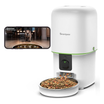


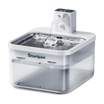








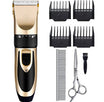






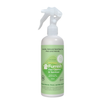




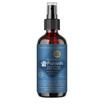














Leave a comment
All comments are moderated before being published.
This site is protected by hCaptcha and the hCaptcha Privacy Policy and Terms of Service apply.